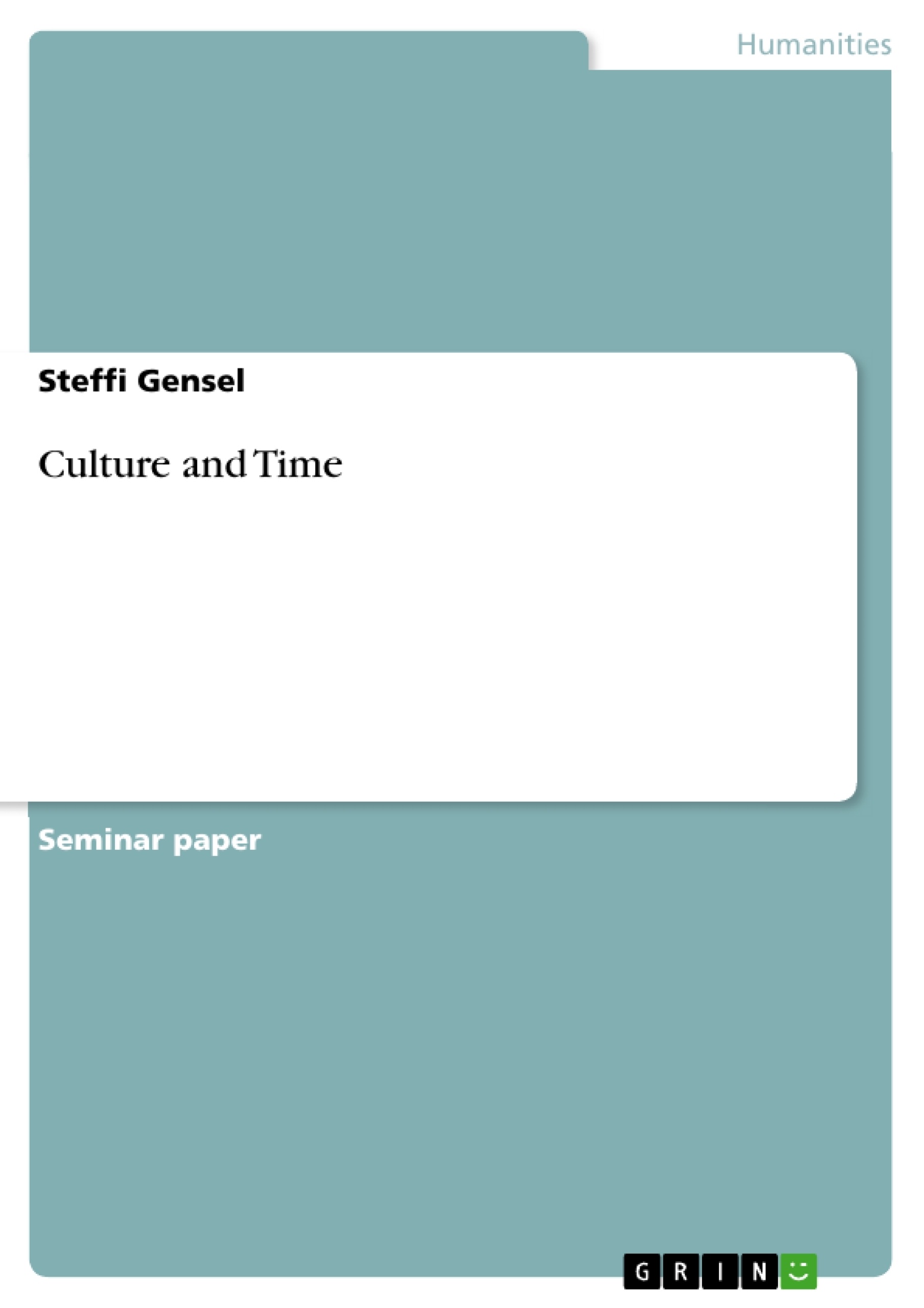The topic “Culture and Time” is really interesting because the question comes up what is culture? It is hard to define it by yourself and there are a lot of different explanations available. But it is clear for everybody that there are differences between cultures even when we do not know which one. Because nearly everybody met somebody from another culture who behaved in a strange way or you thought that they behaved in such a way. Even when you did not met somebody you are aware of such differences because of the media. But why do we feel so? What are the reasons behind it? Furthermore how can we be able to detect such reasons or misunderstandings? And how can we avoid or react?
There are a lot of parts of culture which differ. In this paper we want to talk about the aspect of time. So first of all what is time? How do we feel time? And how do we handle it? It is clear that there are cultures which are more affected by natural influences and some which are a more affected in a technical way (Hall 1990, p. 9). From this it follows that there is more behind the term “Time” than we think about in the first moment.
Table of Contents
- Introduction
- What is culture?
- What is time?
- Different types of organising time
- monochronic or polychronic
- time orientation
- Discussion
- Conclusion
Objectives and Key Themes
This paper examines the relationship between culture and time, exploring the concept of time and its cultural variations. It aims to demonstrate how different cultures perceive and organize time, highlighting the importance of understanding these differences in a globalized world.
- The concept of culture and its diverse definitions.
- The nature of time, encompassing biological and cultural aspects.
- Different cultural approaches to organizing time, including monochronic and polychronic time.
- The impact of cultural differences in time perception on interactions and communication.
- The significance of understanding cultural differences in time for successful communication and collaboration.
Chapter Summaries
The introduction establishes the paper's focus on the intersection of culture and time, highlighting the complexity of defining both concepts. It emphasizes the pervasive influence of cultural differences in time perception and the need for understanding these variations.
Chapter 2 delves into the multifaceted nature of culture, exploring various definitions and presenting a model that depicts culture as a layered system. This model, inspired by Trompenaars and Hampden-Turner (1997), highlights the interconnectedness of artifacts, norms, values, and basic assumptions within a culture.
Chapter 3 investigates the concept of time, acknowledging its biological basis rooted in environmental influences. It introduces the distinction between biological time and cultural time, emphasizing the role of solar, lunar, and annual cycles in shaping human time concepts.
Chapter 4 introduces two contrasting approaches to organizing time: monochronic and polychronic. It outlines key differences between these approaches, including scheduling practices and how individuals allocate their time.
Keywords
The key concepts explored in this paper include culture, time, monochronic time, polychronic time, cultural differences, time orientation, and global communication. By examining the interplay of these concepts, the paper seeks to shed light on the diverse ways in which cultures perceive and organize time.
- Quote paper
- B. Sc. Oecotrophologie Steffi Gensel (Author), 2012, Culture and Time, Munich, GRIN Verlag, https://www.grin.com/document/196281




